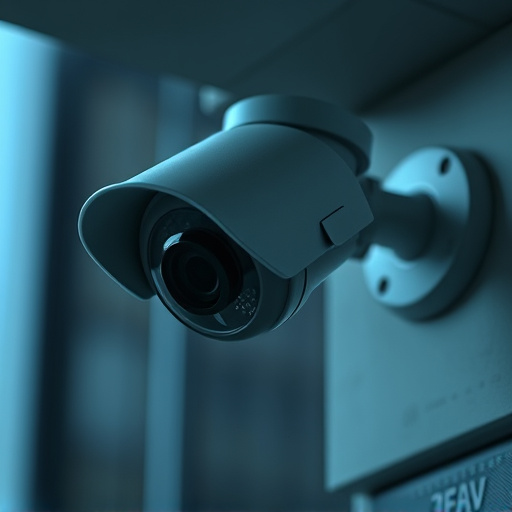The Solar Powered Fake Camera Setup offers a discreet, energy-efficient security solution. Mimicking real cameras with LED indicators and placed strategically, it deters intruders without drawing attention. While aesthetically pleasing, its use raises legal and ethical considerations regarding privacy.
In today’s digital era, enhancing home security has become paramount. One innovative approach gaining traction is the deployment of solar-powered fake camera setups. These devices offer a cost-effective and environmentally friendly alternative to traditional surveillance systems. This article explores the multifaceted aspects of these decoys, from understanding their solar-power dynamics to legal considerations. By breaking down key components, optimal placement strategies, and ethical implications, we empower folks to make informed decisions regarding this game-changing security solution.
- Understanding the Solar Powered Fake Camera Setup
- Components of a Successful Fake Security Device
- Placement and Aesthetics for Maximum Deterrence
- Legal and Ethical Considerations of Using Fake Cameras
Understanding the Solar Powered Fake Camera Setup
The Solar Powered Fake Camera Setup is a clever and subtle way to deter potential intruders, offering a convincing security solution for homes or businesses. This innovative device mimics the appearance of a real camera, complete with LED indicators that mimic the glow of an active sensor. The key feature, however, is its energy efficiency—powered by sunlight, it requires no external wiring or connection to a power source, making it highly portable and versatile.
This setup is designed to blend seamlessly into any environment, providing peace of mind without drawing attention. The solar panel charges the internal battery during daylight hours, ensuring continuous operation even on cloudy days due to its efficient design. Its wireless nature allows for easy placement, whether mounted on a pole or attached to a wall, making it an excellent choice for those seeking a discreet yet effective security measure.
Components of a Successful Fake Security Device
A successful fake security monitoring device setup, like a solar-powered fake camera system, relies on several key components to effectively deter potential intruders. These include high-quality decoy cameras that mimic real surveillance equipment in terms of appearance and functionality. Positioning these cameras at strategic locations around your property creates the illusion of constant observation, making would-be thieves think twice before attempting any unauthorized entry.
Complementing the fake cameras is a robust solar power system that ensures reliable operation without the need for constant electricity supply. Solar-powered setups are not only environmentally friendly but also offer added security by eliminating the risk associated with tripped alarms caused by power outages. Motion sensors and remote monitoring capabilities further enhance the system’s effectiveness, allowing users to receive alerts in real time and remotely access live footage from their smartphones or other devices.
Placement and Aesthetics for Maximum Deterrence
The placement of a solar-powered fake camera setup is strategic, aiming to deter potential intruders through visual and psychological means. Positioning these devices in highly visible areas like entry points, windows, or open spaces acts as a powerful deterrent, sending a clear message that the property is under surveillance. The aesthetic design plays a crucial role too; realistic appearances and strategic angles can make it difficult for criminals to distinguish real cameras from fake ones.
Aesthetically pleasing yet functional, these solar-powered devices blend seamlessly into their surroundings, effectively enhancing overall security. When combined with proper placement, they create an illusion of comprehensive monitoring, deterring would-be intruders who prefer easy targets.
Legal and Ethical Considerations of Using Fake Cameras
The deployment of fake security monitoring devices, such as solar-powered fake camera setups, raises important legal and ethical questions. While these devices can offer cost-effective security solutions for homeowners and businesses, their use must be approached with caution. Legally, it’s crucial to understand that placement of these cameras can infringe on privacy rights, especially if they are positioned in areas where individuals expect privacy, like homes or public spaces with reasonable expectations of privacy.
Ethically, the use of fake cameras could lead to mistrust and potential harm if not used responsibly. It is essential for users to be transparent about the presence of these devices to avoid misleading others. Moreover, the potential for misuse, such as creating a false sense of security or surveillance without consent, highlights the need for clear guidelines and regulations governing the installation and operation of solar-powered fake camera setups.
A Solar Powered Fake Camera Setup can be an effective deterrent for potential intruders, offering a cost-efficient and environmentally friendly security solution. By strategically placing these realistic-looking devices with careful consideration of their components, aesthetics, and legal standing, homeowners can enhance their home’s security without breaking the bank. Remember, while fake cameras provide a visual scare, they should always be accompanied by genuine security measures for comprehensive protection.
